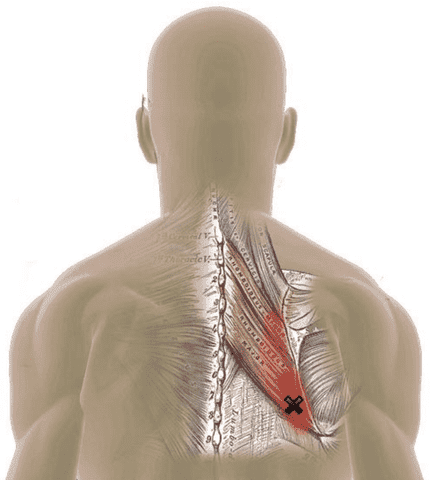Dry Needling Vs Trigger Points
Physical therapists commonly combine dry needling with other manual techniques to address myofascial pain. Unlike massage, dry needling targets muscle tissue and connective tissues.
Needles can penetrate into trigger points on the skin in order to release tension and stimulate a healing response, making them especially helpful for patients who have not responded to other treatments.
What is a Trigger Point?
Trigger points are sensitive areas in muscles and fascia (web of connective tissue) that produce pain when compressed or stretched. These can develop due to overuse or strain on a muscle.
Your physical therapist can use a range of treatments to reduce trigger points. Common approaches include sustained pressure, posture and movement correction, electrical stimulation, dry needling, and massage.
Dry needling is an effective treatment for trigger points and tight knots in muscles and fascia. Your doctor will pinpoint the area where you are experiencing discomfort and thoroughly clean it afterwards.
Your provider will insert a needle into your muscle and inject a small amount of medication into the trigger point. After administering the shot, they’ll gently massage the area to release any knots or tension in the muscles. This is an incredibly safe and successful procedure.
How Do Trigger Points Develop?
Muscle in your body is made up of bundles of fibers encased in fibrous collagen called “fascia,” which runs throughout the entire muscle and serves as the glue that holds them together.
When muscles become taut, they can restrict blood flow and lead to symptoms such as fatigue, headaches, vertigo and numbness. Trigger points are commonly responsible for these symptoms and can be treated by a physical therapist.
Trigger points are tight spots within the taut band of muscle fibers and fascia that restrict blood flow to an area, resulting in pain. These tight places have also been referred to as “contracture knots” or “knots.”
How Do Trigger Points Cause Pain?
Trigger points can develop due to repetitive movement, injury or prolonged stress. They are also often the source of chronic pain for those suffering from myofascial pain syndrome or referred pain.
When a trigger point becomes painful, it’s usually because the knotted tissue restricts blood flow and oxygen to the muscle tissue. This deprives cells of essential nutrients and oxygen, leading to muscle cell starvation and inability to heal properly.
A lack of blood flow to the muscles can create a vicious cycle that can be difficult to break. With less oxygen in the tissue, waste products build up.
Thankfully, there are several effective treatments to relieve trigger points and minimize pain. Physical therapy and medications may both help, as can massage therapy to promote release of trigger points.
What is the Difference Between Dry Needling and Trigger Point Therapy?
Physical therapists trained in dry needling insert sterile, single-use needles into muscle bands associated with trigger points. These trigger points have been known to restrict blood flow, cause muscle spasms and irritate nerve fibers.
The needles are then gently maneuvered by the therapist to trigger what’s known as a local twitch response, which releases knotted muscle tissue. Many people report feeling immediate improvement in their pain and mobility after this session.
Trigger points can develop due to excessive use, trauma or stress on the body and may refer pain elsewhere in the body.
Overuse of muscles causes them to enter an energy crisis, leading to decreased blood flow and a lower pH level in the area. This causes your muscle fibers to break down, releasing chemicals which cause inflammation and pain.
If you are experiencing shoulder pain, visit our shoulder pain treatment page for more information on how we can help you.
For further assistance or to schedule an appointment with our team of specialists, please visit our contact page.
For more information about our services and treatments, visit our home page.



